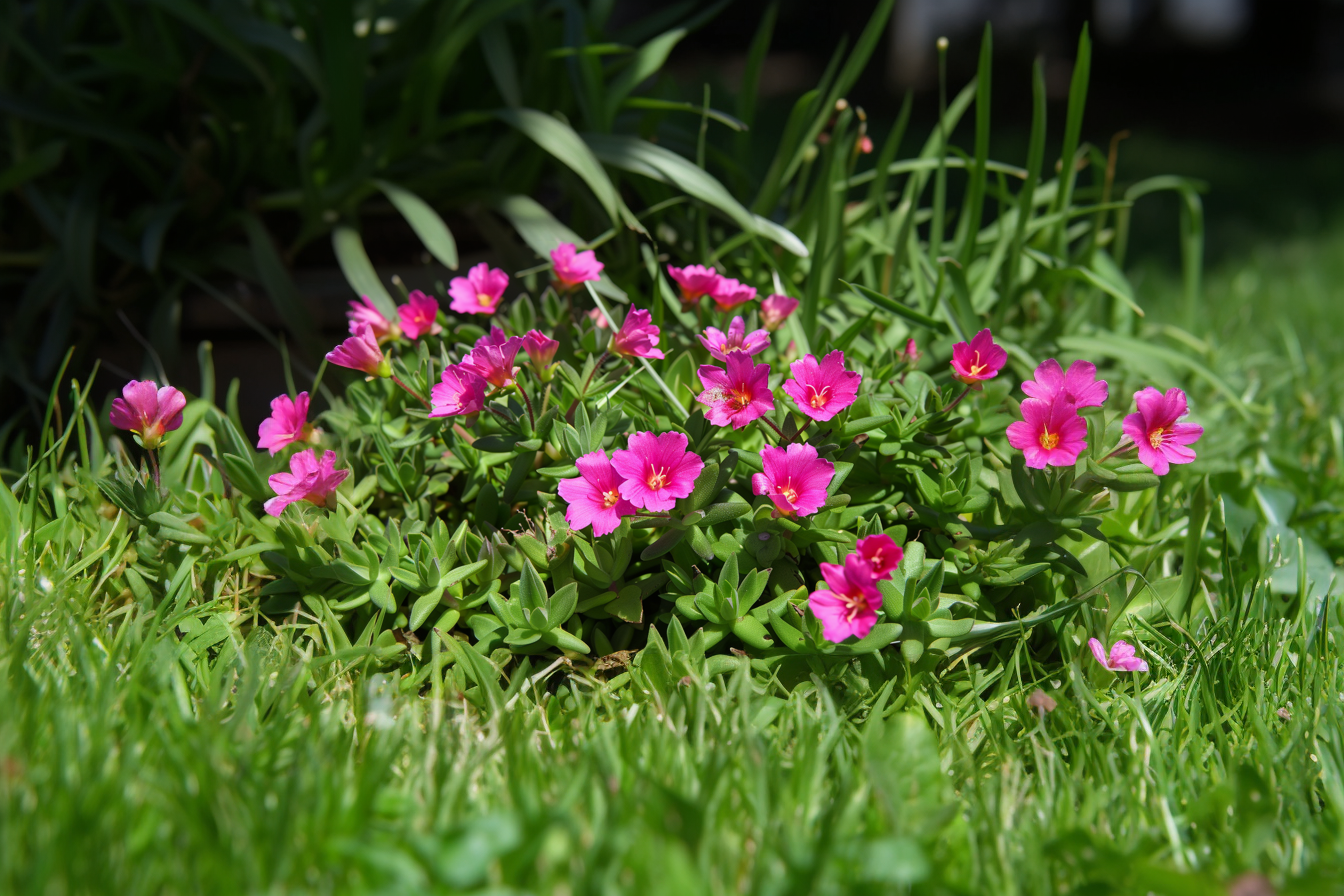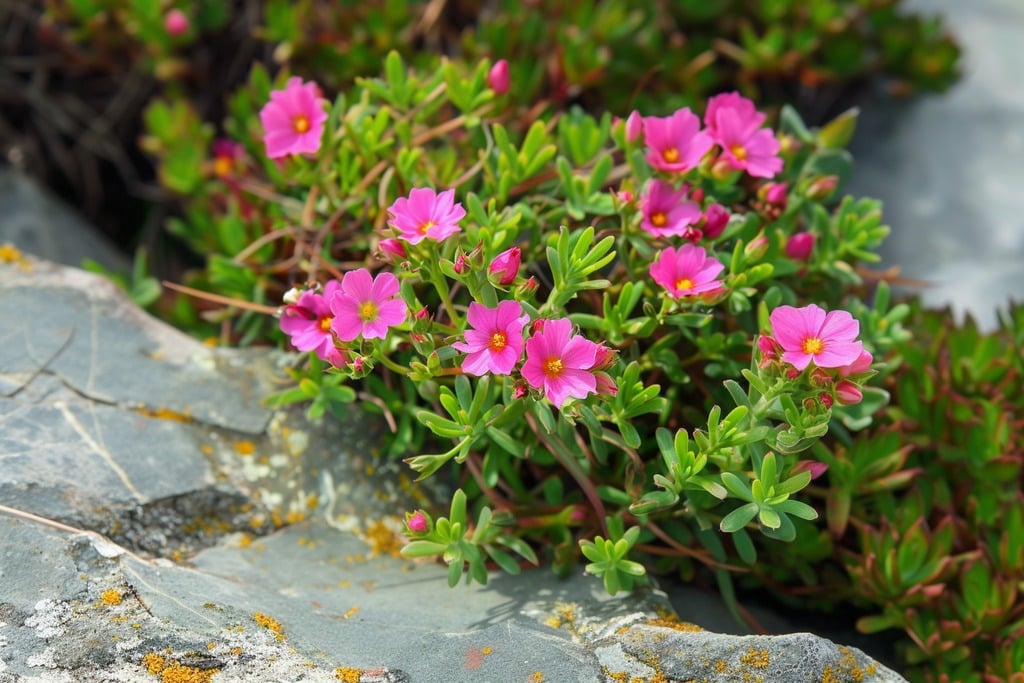Nestled along the sandy shores and lush landscapes of Coastal North Carolina, the Kiss-Me-Quick plant (Portulaca pilosa), with its vibrant blossoms and resilient nature, is a fascinating yet underappreciated native species. Often overshadowed by more prominent flora, this humble succulent offers not only aesthetic appeal but also a rich history and numerous ecological benefits. In this blog, we’ll delve into the origins of Kiss-Me-Quick, outline its advantages, and provide practical advice on how to nurture this charming plant in your own garden.
The Enchanting History of Kiss-Me-Quick
Kiss-Me-Quick, also affectionately known as Pink Purslane or Hairy Purslane, is more than just a pretty face in the plant kingdom. Its presence in Coastal North Carolina dates back centuries, serving multiple roles in the ecosystems and human communities alike. Historically, native tribes valued the plant for its medicinal properties, utilizing it to treat a variety of ailments. As European settlers arrived, they too learned to appreciate the plant’s uses, both culinary and curative.
The botanical name, Portulaca pilosa, hints at its unique characteristics; “pilosa” meaning ‘hairy,’ which describes the fine hairs that cover its stems and leaves, adding a layer of intrigue to its appearance. This plant’s common name, “Kiss-Me-Quick,” is believed to stem from its rapid seed dispersal upon the slightest touch, a delightful surprise to those unfamiliar with its tactile sensitivity.
Benefits of Kiss-Me-Quick
Ecological Impact
Kiss-Me-Quick plays a crucial role in its native habitat. It acts as a ground cover, reducing soil erosion and helping maintain soil moisture during the hot summer months. Its flowers attract a variety of pollinators, including bees and butterflies, which are vital for the pollination of many other native plants.
Health and Culinary Uses
Rich in omega-3 fatty acids and antioxidants, the leaves of Kiss-Me-Quick are not only edible but are also a nutritious addition to salads and soups. Traditional remedies derived from this plant have been used to soothe skin irritations and to treat digestive issues.
Growing Kiss-Me-Quick
Location and Soil
Kiss-Me-Quick thrives in sandy, well-draining soil, mimicking its natural coastal environments. It prefers full sun but can tolerate partial shade, which makes it versatile for various garden settings.
Watering and Care
As a drought-tolerant species, Kiss-Me-Quick requires minimal watering once established, making it an ideal choice for xeriscaping or low-water gardens. It’s also resistant to most pests and diseases, ensuring that it remains a low-maintenance option for both novice and experienced gardeners.
Propagation
Propagating Kiss-Me-Quick is straightforward. Seeds can be sown directly in the ground in spring or summer. Alternatively, cuttings can be taken and rooted in soil to establish new plants quickly.
Integrating Kiss-Me-Quick into Your Garden
Companion Planting
Kiss-Me-Quick pairs well with other drought-tolerant plants, creating a vibrant and sustainable garden ecosystem. Good companions include lavender, sedum, and salvia, which share similar growing conditions. Together, they form a robust tapestry of colors and textures that not only look pleasing but also support a healthy garden environment.
Design Aesthetics
With its sprawling habit and bright pink flowers, Kiss-Me-Quick can serve as an excellent ground cover or a colorful edge to pathways and borders. Its low-growing nature makes it perfect for rock gardens or as a frontal plant in mixed beds, providing a pop of color from spring through fall.
Future Perspectives and Conservation
Conservation Efforts
As urban expansion continues, the natural habitats of many native plants like Kiss-Me-Quick are at risk. Conservation efforts are crucial to preserve these species and their ecological roles. Native plant societies and local gardening groups often organize plant rescues and spread awareness about the importance of native flora in maintaining biodiversity.
The Role of Home Gardeners
Home gardeners play a vital role in the conservation of native plants. By choosing natives like Kiss-Me-Quick for their gardens, they help ensure these plants continue to thrive and propagate. Moreover, these choices support local wildlife and promote a healthier, more sustainable gardening practice.
Conclusion
Embracing the charm and resilience of Kiss-Me-Quick is more than a gardening choice—it’s a step towards ecological responsibility and historical appreciation. Whether you’re a seasoned gardener or a curious beginner, incorporating Kiss-Me-Quick into your landscape offers a unique opportunity to participate in the preservation and enjoyment of North Carolina’s natural heritage. So why not let this delightful native plant kiss your garden with its quick charm?
If you have any questions about planting or caring for Kiss-Me-Quick, or if you’d like to share your experiences with this or other native plants, feel free to reach out in the comments below. Let’s keep our local ecosystems vibrant and thriving!





